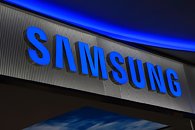Friday, November 10th 2017

Samsung Announces New GDDR6 Memory, 8 TB NGSFF SSD
Samsung managed to snag 36 CES 2018 Design and Innovation awards, and the company took to a press release to acknowledge the honors, and shed some light on some of its upcoming products and technologies. Of particular interest to us enthusiasts is the presence of GDDR6 memory, which Samsung says is "(...) The fastest and lowest-power DRAM for next generation, graphics-intensive applications." this new memory is expected to process images and video at 16 Gbps with 64GB/s data I/O bandwidth, which is capable of up to 5 GB/s speeds. Additionally, Samsung said the new DRAM can operate at 1.35 V, offering increased power efficiency over today's graphics memory (which typically requires 1.5 V).
Samsung also announced a NGSFF (Next-Generation Form-Factor) SSD solution, which "dramatically improves the storage capacity and performance of 1U rack servers," which allows for I/O speeds at 0.5 petabytes per second. Measuring only 30.5mm x 110mm x 4.38mm, the drive also improves space utilization and scaling options in hyper-scale datacenter servers.
Sources:
Samsung, via Reddit
Samsung also announced a NGSFF (Next-Generation Form-Factor) SSD solution, which "dramatically improves the storage capacity and performance of 1U rack servers," which allows for I/O speeds at 0.5 petabytes per second. Measuring only 30.5mm x 110mm x 4.38mm, the drive also improves space utilization and scaling options in hyper-scale datacenter servers.

10 Comments on Samsung Announces New GDDR6 Memory, 8 TB NGSFF SSD
...or I might be wrong and it'll go into PS6 or XBox^2
Either Nvidia goes HBM this next round or after that, there is no particular good reason for GDDR over HBM and many reasons for HBM over GDDR.
HBM is not what made vega bad or expensive or w/e.
GDDR5x according to electrical specs is pretty much the same as GDDR6 will be, e.g. 1.35V Vdd (supply voltage), and 1.8V Vpp (pump voltage). Even their speeds are quite similar, so the only difference is a totally reworked memory interfacing.
Heh, it's kinda ironic that the only reason HBM made its way into the consumer space is due to AMD's inefficient GPU designs...